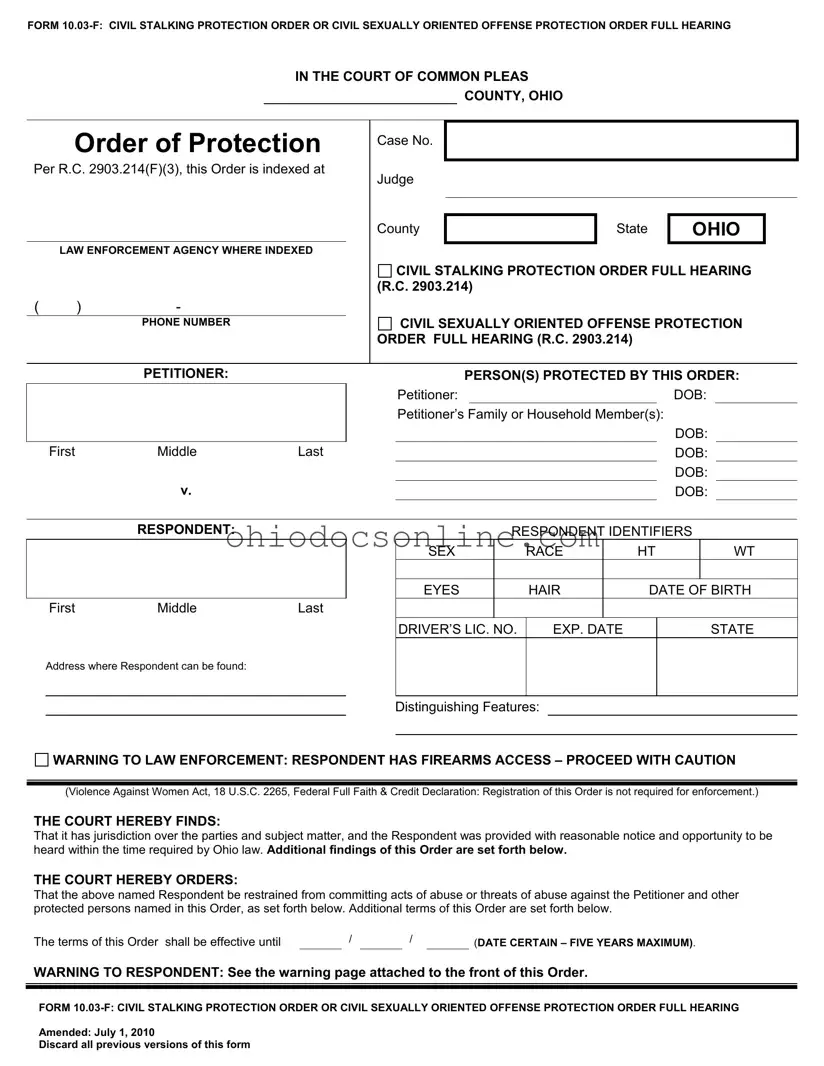Ohio Order Of Protection Template in PDF
The Ohio Order of Protection form is a legal document designed to safeguard individuals from harassment or abuse. This form can be used to request a Civil Stalking Protection Order or a Civil Sexually Oriented Offense Protection Order, both of which aim to protect victims from potential harm. Understanding how to properly fill out and file this form is essential for anyone seeking legal protection in Ohio.
Open Editor
